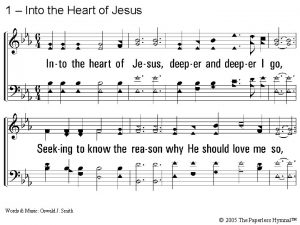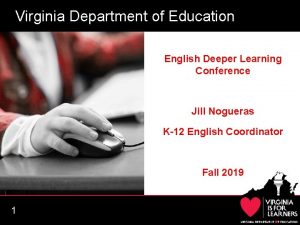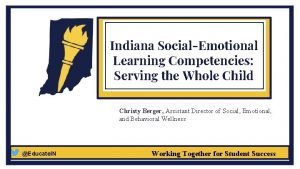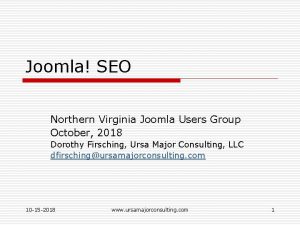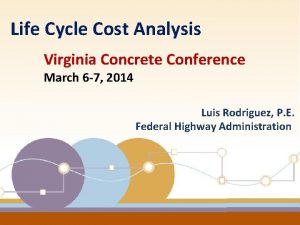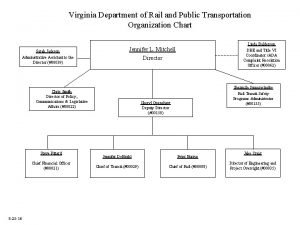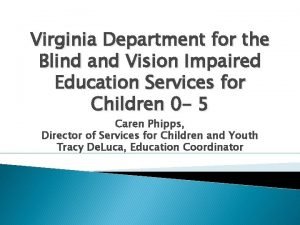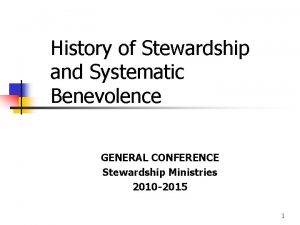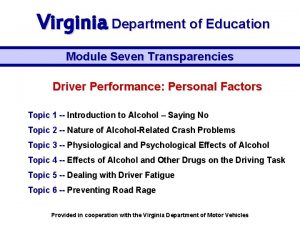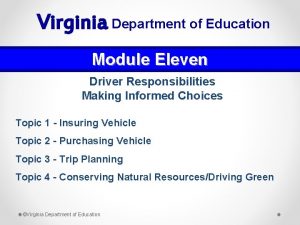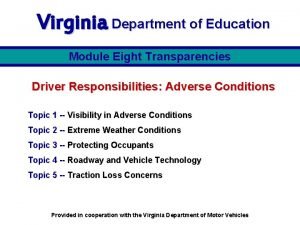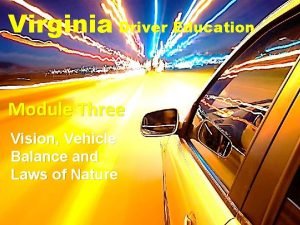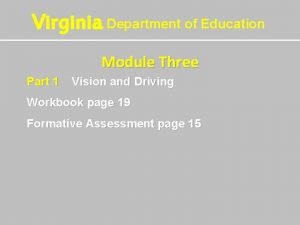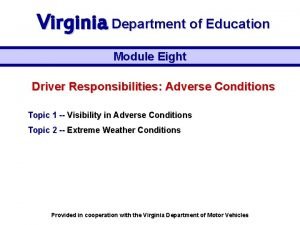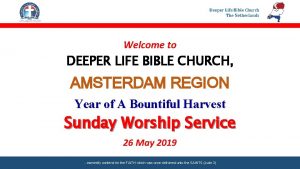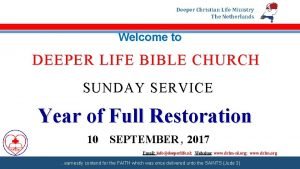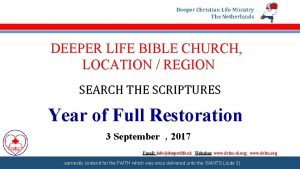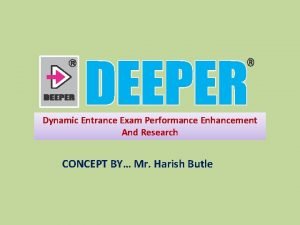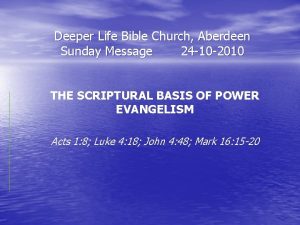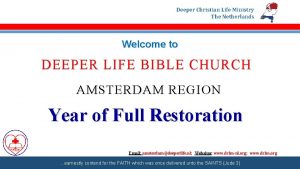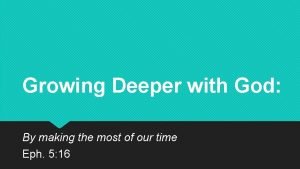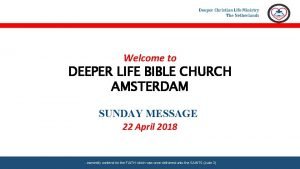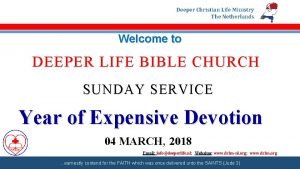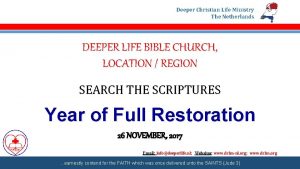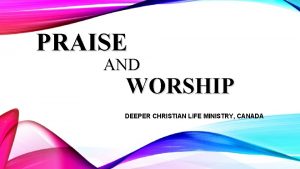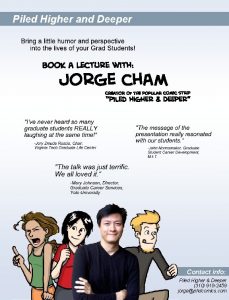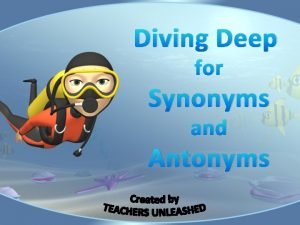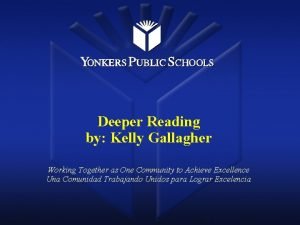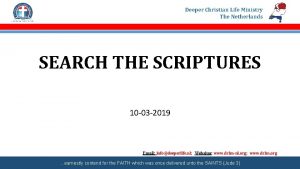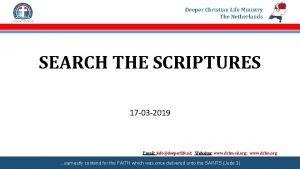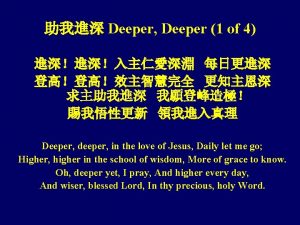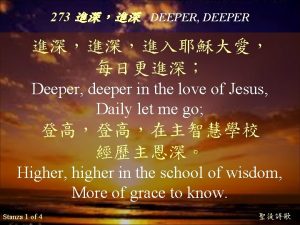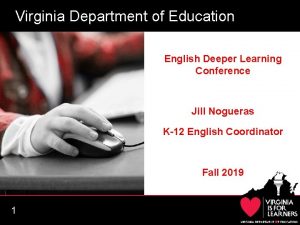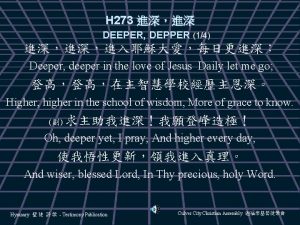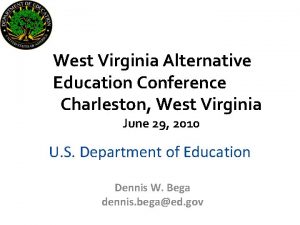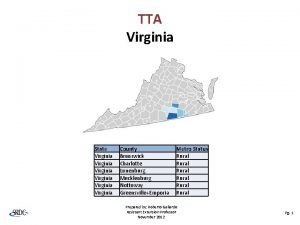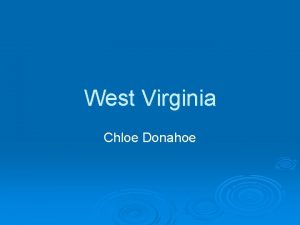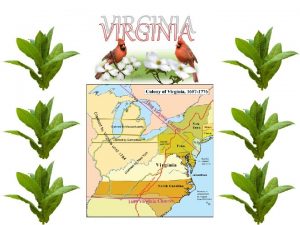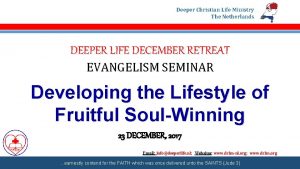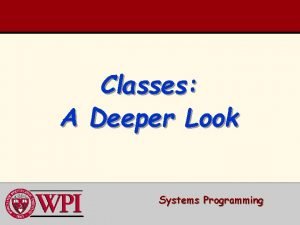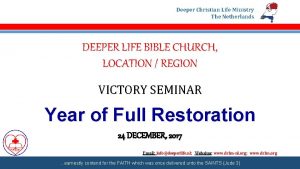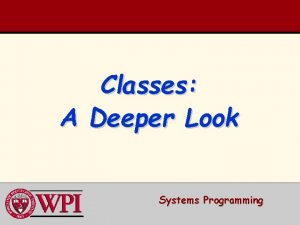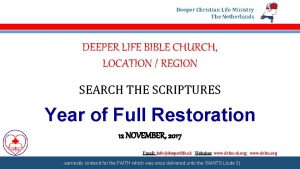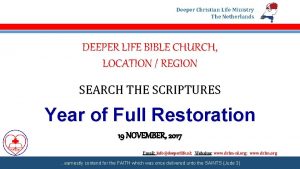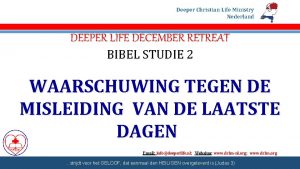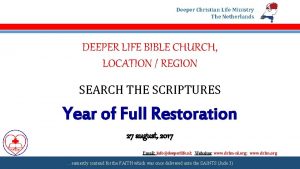Virginia Department of Education English Deeper Learning Conference














































- Slides: 46

Virginia Department of Education English Deeper Learning Conference Jill Nogueras K-12 English Coordinator Fall 2019 1

Welcome #VAis. For. Readers 2

Mor Afte ningrnoo n 10: 31: 00 0 p. m. a. m. 2: 30 12: 0 p. m. 0 p. m. K-2: PALWriti S ng Wor Instr kshouctio p n as part of an Integ rated Unit 3 -5: Inte Writi grating ng Instr the uctio 2017 n SOLthat usincould g lead paireto a d perfo passrman agesce asse ssm ent Divis ion Lead ers: Free. PAL Choi. S ce Divis ion Rep Meet ing Break Out Sessions Morning- 10: 30 a. m. -12: 00 p. m. Afternoon- 1: 00 p. m. -2: 30 p. m. K-2: PALS Workshop K-2: Writing Instruction as part of an Integrated Unit 3 -5: Integrating the 2017 SOL using paired passages 3 -5: Writing Instruction that could lead to a performance assessment Division Leaders: Free Choice Division Leaders: PALS Division Rep Meeting Morning- 10: 30 a. m. - 12: 00 p. m. Afternoon- 1: 00 p. m. - 2: 30 p. m. Middle School: Writing in Middle School: Secondary Reading with the 2017 SOL High School: Scoring Performance Assessments for Verified Credit 3 High School: Secondary Reading with the 2017 SOL

Mor Afte ningrnoo n 10: 31: 00 0 p. m. a. m. 2: 30 12: 0 p. m. 0 p. m. K-2: PALWriti S ng Wor Instr kshouctio p n as part of an Integ rated Unit 3 -5: Inte Writi grating ng Instr the uctio 2017 n SOLthat usincould g lead paireto a d perfo passrman agesce asse ssm ent Divis ion Lead ers: Free. PAL Choi. S ce Divis ion Rep Meet ing 2018 -2019 Reading SOL Pass Rates Test Grade 3 English Reading Grade 4 English Reading Grade 5 English Reading Grade 6 English Reading Grade 7 English Reading Grade 8 English Reading End of Course English Reading 4 2016 -2017 Pass 2017 -2018 Pass 2018 -2019 Pass Rate 75 72 71 79 76 75 81 80 78 78 80 77 82 81 79 76 77 76 87 87 86

2018 -2019 Writing SOL Pass Rates Test 5 2016 -2017 Pass Rate 2017 -2018 Pass Rate 2018 -2019 Pass Rate Grade 8 Writing 73 73 70 End of Course Writing 84 84 81

Summary of Changes in the 2017 English Standards of Learning Alignment with the 5 Cs: Critical Thinking, Creative Thinking, Communication, Collaboration, and Citizenship Alignment to the applicable VA Workplace Readiness Skills Reorganization of K-3 to align with 4 -12 Expansion of technical reading & writing in grades 9 -12 6

New Communication Strand Grades K-3 Formerly Oral Language New Communication and Multimodal Literacies strand focuses on: Building communication skills Ask questions; collaborate with partners or groups Strengthening early oral literacy skills Retell stories; participate in creative dramatics Developing presentation skills Speak clearly; organize ideas; use multimodal tools 7

New Research Strand Grades K-3 Strand focuses on: Generating topics of interest Asking questions to gather information Identifying pictures, texts, or people as sources Collecting information From provided sources or student-selected resources Organizing and recording information Orally and/or in writing 8

Literary Nonfiction Grades 3 -12 Previously referred to as Narrative Nonfiction in Grade 3 Literary Nonfiction is a type of narrative text Uses story elements and language to share accurate information about real people, places, and events Including but not limited to biography and autobiography 9

Clarification of Theme and Main Idea Grades K-5 Students will now identify theme in fictional texts and poetry Teachers should teach theme as a literary term with fiction texts and main idea with nonfiction texts *Please note these terms are not interchangeable Students will continue to identify main idea in nonfiction 10

Pairing Literary and Informational Nonfiction Texts- Grades 4 & 5 Creation of standards requiring students to compare/contrast details between literary fiction and informational nonfiction texts Students will: Analyze similarities and differences between paired fiction and nonfiction texts Texts can be paired based on similar themes, topics, or patterns of events Pairings can include books, articles, poems, media, or graphics 11

Focus on the Writing Process (1 of 2) Emphasis on ethical use of the Internet when gathering and using information (Grades 3 -12) Writing process increases in complexity and rigor as students progress through K-12 12 Kindergarten = narrative and descriptive Grade 1 = narrative, descriptive, and opinion Grade 2 = narrative, descriptive, opinion, and expository Grade 3 = narrative, descriptive, opinion, and expository Grade 4 = narrative, descriptive, opinion, and expository Grade 5 = narrative, descriptive, expository, and persuasive

Focus on the Writing Process (2 of 2) Introduction of a focus on a mode of writing at each grade level: 6 th- narrative & reflective 7 th & 8 th – expository & persuasive 9 th & 10 th – persuasive & analytical 11 th & 12 th – persuasive & argumentative 13

Strands of the 2017 English Standards The strands of the 2017 English Standards: Communication & Multimodal Literacies Reading Writing Research The goals are to teach students to read, write, research and communicate. The strands are developed separately, but expected to be seamlessly integrated in the classroom. Through the rigorous application of the English Standards of Learning, students become critical thinkers, effective contributors, and global citizens. 14

The Spiraling of Skills The concepts, skills, and content in English Language Arts spiral; teachers should note each grade level builds skills that carry to the following grades. Each grade level within the English Curriculum Framework builds from kindergarten through grade 12, creating a comprehensive instructional tool, which prepares students for success in future postsecondary education and the workplace. Teachers should review the Curriculum Framework for the scope of learning in each of the strands in previous grades and in the grades to follow. 15

Text Features Spiral of Standards 16

2017 English Curriculum Framework (1 of 5) 17

2017 Curriculum Framework (2 of 5) The 2017 English Standards of Learning are expanded by the Essential Knowledge, Skills, and Processes (EKSP) in the Curriculum Framework This is not meant to be an exhaustive list, nor one that limits what is taught in the classroom The EKSP is not a one-to-one match of the standards If the standard is self-explanatory, there will be no additional explanation 18

2017 Curriculum Framework (3 of 5) • Overview of strand on Strand Introduction page • Teacher Notes appear on Introduction page • Suggested Instructional Strategies and Best Practices are on Teacher Notes page • First column Understanding the Standard has been deleted and that information moved to introduction page • CF Columns: Essential Understandings & Essential Skills, Knowledge, and Processes 19

2017 Curriculum Framework (4 of 5) 20

2017 Curriculum Framework (5 of 5) 21

2017 SOL Progression Charts 22

2017 SOL Crosswalk 23

Assessment & the 2017 English Standards of Learning 24

Writing Blueprints There are no new writing blueprints that align with the 2017 SOL writing tests remain on the 2010 SOL. School divisions are currently required to use the local alternative assessment for 5 th grade writing. School divisions are currently required to use the 8 th grade writing SOL test. School divisions have the option to use the EOC SOL writing test or the local high school performance assessment to verify credit in writing. 25

Understand Scoring (1 of 2) 26

Understand Scoring (2 of 2) 27

Seamless Integration of English Strands Reading Writing Research Communication/ Multimodal Literacies 28

Read! • Students need opportunities to read daily. • Students need to read extended pieces of text and grade level material. • All students need opportunities to read grade level text daily, including nonfiction and fiction pieces. • Schools should provide students with opportunities to read and compare paired passages (fiction and nonfiction) on the same topic as appropriate. • When students are analyzing ideas in two texts and searching for textual evidence to support their conclusions, they are engaging in deeper learning and thinking critically. 29

Successful English Instruction Integrate the strands • Reading • • Specific vocabulary from authentic texts Both fiction & nonfiction text Text-rich environment with variety of text and media Student choice whenever possible • Writing • • • Writing as a process for a variety of authentic purposes Regular writing conferences Use of Writing Portfolios • Research • Ongoing and embedded in the learning process (when applicable) 30 • Communication/Multimodal Literacies

Successful English Instruction Best Practices • • • Use of text-dependent questions Use of inference questions Use of text-based vocabulary Response to reading Writing components in every lesson • Frequent research components 31

Paired Texts and Text Sets • Paired texts can include books, plays, articles, poems, functional text, graphics, or digital media • Focus on a common theme or topic that fits history and social science or science content • Compare and contrast texts to increase the level of thinking 32

3 3 Integration of Skills • Choose a theme or topic • Choose a variety of text and media options • • Incorporate all strands during the unit • 33 Select standards to introduce or review • • Think about your students – What will interest them? Provide opportunities for shared and independent reading Model the writing process and meet with students for writing conferences

The Reading/Writing Connection Use mentor texts to read like a writer and write like a reader Imitate an author’s style and structure Appreciate the author’s craft Incorporate daily writing A warm-up prior to beginning a unit of study Incorporate writing into formative assessment After a thought provoking reading, discussion, or class experiment, students write their thoughts Find authentic writing opportunities Blogging or Social media connections Professional writing 34

The Forgotten “R” • The elimination of the grade 5 Writing SOL assessment threatens writing/research instruction • Writing, like reading, is a life skill and should be included in all curricular areas. • How much writing does your job require? 35

Assigned vs. Taught Students write only on teacher selected topic, purpose and audience Students select their own topic, purpose, and audience Students are given a task without the instruction on how to complete it successfully Teacher time is spent in class teaching writing skills and strategies Minimal improvement in writing Students use models and strategies to complete each assignment Students rewrite only to correct errors in usage and mechanics Students move through the recursive process 36 Because Writing Matters by Carl Nagin The National Writing Project

When writing is taught… Teachers model by • Writing with the students • Revealing the hard work of writing • Thinking aloud through revision of their writing • Editing only after revision is complete 37

Resources that Align with the 2017 SOL Comprehensive Literacy: English Instructional Plans VDOE English Standards of Learning Webpage 38

Comprehensive Literacy: English Instructional Plans 39

English Instructional Plan Samples 40

41

Virginia Is For Learners 42

Virginia Is For Learners Webpage 43

Teacher Direct Access Teacher. Direct from “Instruction” Link on the left side of the VDOE home page 44

R e f e r e n c e w i t h i n t h i s p r e s e n t a t i o n t o a n y s p e c i f i c c o m m e r c i a l o r n o n c o m m e r c i a l p r o d u c t , p r o c e s s , o r s e r v i c e b y t r a d e n a m e , t r a d e m a r k , m a n u f a c t u r e r o t h e r w i s e d o e s n o t c o n s t i t u t e o r i m VDOE Disclaimer Reference within this presentation to any specific commercial or noncommercial product, process, or service by trade name, trademark, manufacturer or otherwise does not constitute or imply an endorsement, recommendation, or favoring by the Virginia Department of Education. 45

Stay Connected Jill Nogueras K-12 English Coordinator Jill. Nogueras@doe. virginia. gov Carmen Kurek Elementary English/Reading Specialist Carmen. Kurek@doe. virginia. gov Taylor Snow English/History & Social Science Specialist Taylor. Snow@doe. Virginia. gov Assessment Office Student_Assessment@doe. virginia. gov 46
 Into the heart of jesus deeper and deeper i go
Into the heart of jesus deeper and deeper i go Vaap curriculum framework
Vaap curriculum framework Idoe science of happiness
Idoe science of happiness Northern virginia seo
Northern virginia seo Cost analytics virginia
Cost analytics virginia Virginia department of agriculture food safety
Virginia department of agriculture food safety Virginia department of historic resources database
Virginia department of historic resources database Virginia department of rail and public transportation
Virginia department of rail and public transportation Virginia department for the blind and vision impaired
Virginia department for the blind and vision impaired Cuadro comparativo e-learning y b-learning
Cuadro comparativo e-learning y b-learning General conference stewardship department
General conference stewardship department Module 10 topic 1 drivers ed
Module 10 topic 1 drivers ed Module 7 topic 1 drivers ed
Module 7 topic 1 drivers ed Module 11 drivers ed virginia
Module 11 drivers ed virginia Module 8 topic 1
Module 8 topic 1 Allows maximum stopping force without locking up the brakes
Allows maximum stopping force without locking up the brakes Curriculum guide for driver education in virginia module 3
Curriculum guide for driver education in virginia module 3 Drivers ed module 5 topic 1
Drivers ed module 5 topic 1 Module 8 topic 1
Module 8 topic 1 Go deeper in christ
Go deeper in christ Deeper life netherlands
Deeper life netherlands Deeper life search the scriptures volume 78
Deeper life search the scriptures volume 78 Deeper life bible church netherlands
Deeper life bible church netherlands Deeper life search the scriptures volume 1
Deeper life search the scriptures volume 1 What is deeper exam
What is deeper exam Deeper life bible church messages
Deeper life bible church messages Deeper life netherlands
Deeper life netherlands Deeper life bible church
Deeper life bible church Search the scriptures netherlands
Search the scriptures netherlands Growing deeper in god
Growing deeper in god Deeper life netherlands
Deeper life netherlands Deeper life netherlands
Deeper life netherlands Dclm netherlands
Dclm netherlands The deeper christian life
The deeper christian life Deeper life netherlands
Deeper life netherlands Civil war digging deeper webquest answers
Civil war digging deeper webquest answers Deeper life canada
Deeper life canada Jesus lord of heaven
Jesus lord of heaven Piled higher and deeper
Piled higher and deeper Deep dive synonym
Deep dive synonym Promote together
Promote together Deeper life netherlands
Deeper life netherlands Deeper life netherlands
Deeper life netherlands Deeper life netherlands
Deeper life netherlands Deeper life netherlands
Deeper life netherlands Deeper life netherlands
Deeper life netherlands Deeper life bible church netherlands search the scriptures
Deeper life bible church netherlands search the scriptures
